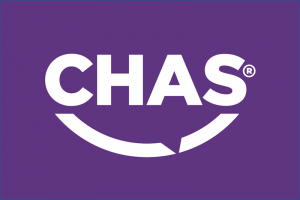Introduction
This case study examines the innovative application of drone technology for the inspection and mapping of culverts. The primary objective of this survey was to conduct a condition assessment and map out the culvert’s route using the LiDAR payload. The study emphasizes the effectiveness of drones in collecting comprehensive data and obtaining measurements. This approach facilitated informed planning and maintenance decisions, showcasing the significant advantages of using drones in infrastructure assessment.
Culvert Outlet
Structure Information
Prior to Vertex attending site, we had limited information on access, dimensions and previous reports however, we knew where the outlet was and had been told the culvert was approximately 100m long. We also knew the dimensions at the outlet were approximately 1.8m x 2.0m . Ideally, we would have more comprehensive information than this before attending site which made this one a challenge from the get go.
Locating Access Points
Signal Repeater In Position
Using the Co-ordinates provided, Vertex operatives located the outlet of the culvert and set up a base to begin the inspection and mapping survey.
Being told the approximate length was 100m, we were confident the drone would make the distance to the inlet if the clearance stayed the same throughout. This would allow operatives on site to work out the location of the inlet.
Signal Issues
Sharp Incline and Direction change at ~40m
After completing a recce-flight, it was found the drone couldn’t get past 75m due to signal strength. This was because of a sharp elevation change and direction change at around 40m in. Our surveyors completed the condition survey up to around 70m and began LiDAR scanning the culvert with the Survey Package LiDAR. Ground Control Points were also picked up to give the pointcloud reference and check the accuracy of our model.
Using On-Site Data to Locate The Inlet
Red - Potential Location of Inlet
Using the data collected from the inlet, the LiDAR had picked up approximately 80m of the culvert which we could use to find the rough path it followed on site. Comparing the google maps location of the outlet and the LiDAR scan imported from the laptop, we could roughly mark and measure where the inlet is likely to be.
Continued Data Collection From Inlet
Location of Inlet Found
Using the approximate location, operatives where able to locate the culvert inlet and continue the survey from this location. Locating this was also important for us to be able to get ground control points down and check the accuracy of our Pointcloud from one side to the other.
Using distinctive features and historic sprayed numbers on the culvert walls, we could clearly work out where we got to from the other side, and made sure to overlap this to make sure we had 100% coverage of LiDAR and Visual Condition Survey. This would also allow for stitching the two separate pointclouds together using Faro Connect. The large jagged rocks and direction changes allow for cloud-to-cloud stitching with confidence in this environment.
Post-Processing and Analysis
When exporting the data from this job, we allocated the still images with chainage and video footage for our condition surveyors along with the RAW LiDAR data and GCP data for our Geospatial team.
RAW LiDAR Data
Still Images with Chainage
Using Faro Connect, we re-processed the pointcloud with the best parameters for this environment. We then also geo-referenced the pointcloud using the GCP’s we took on site. This gave us a pointcloud of the route of the culvert and surrounding area with co-ordinate data ready to be imported into CAD and tied in with topographical surveys above ground.
Merged and Co-ordinated Pointcloud
Conclusion
Overall, the culvert measured ~115m in length as opposed to the assumed 100m. There were also multiple areas with very little clearance and fast water flow which made for a challenging flight for our operators. The signal difficulties were overcome by using multiple access points to provide 100% coverage within the culvert.
Despite these challenges, this highlights the obvious advantages for using a drone instead of confined space entry for inspections like this. There was no one in a position of danger at any time and we were able to provide crucial information for if confined space entry is needed in the future allowing for a much safer plan of action.

















